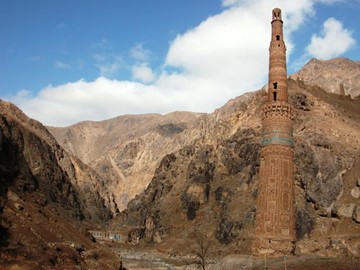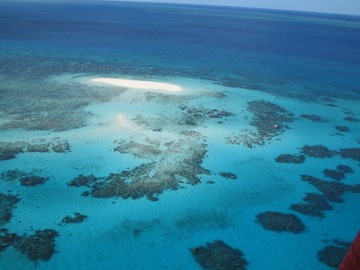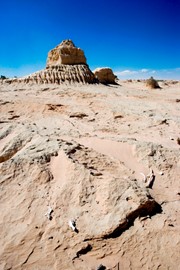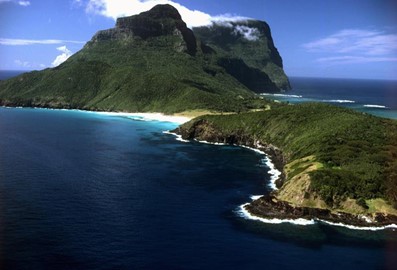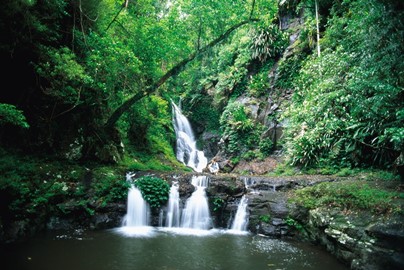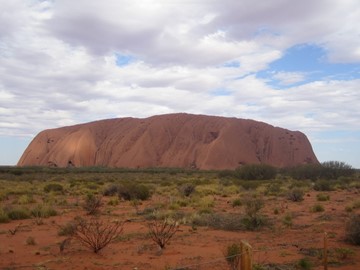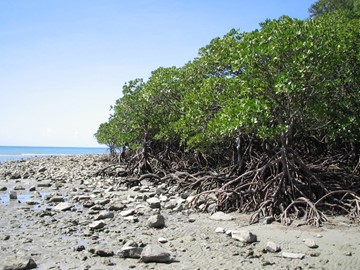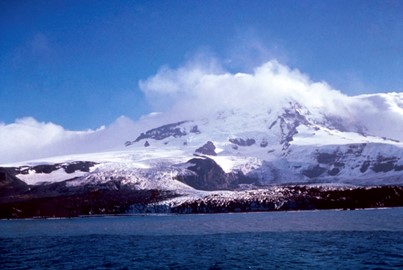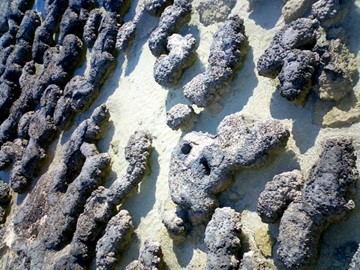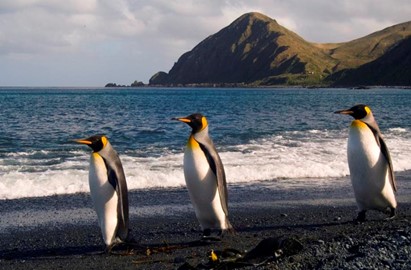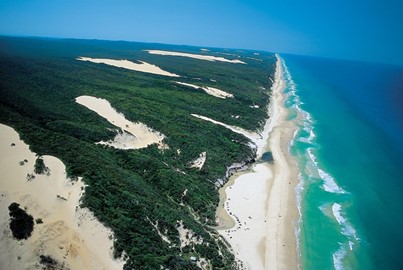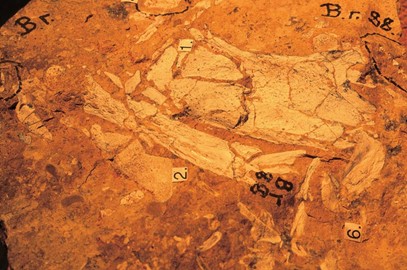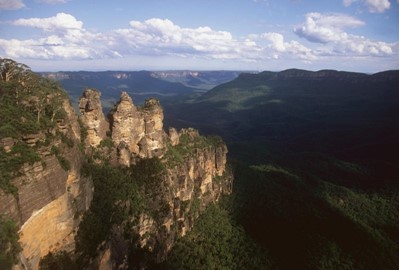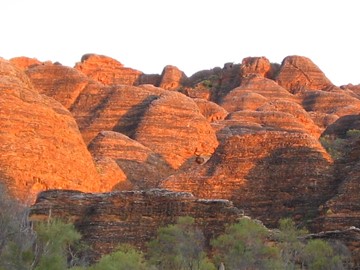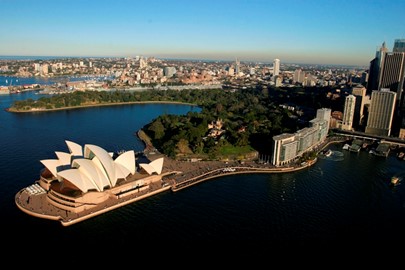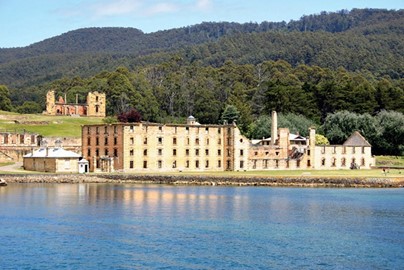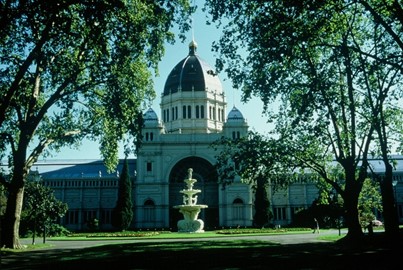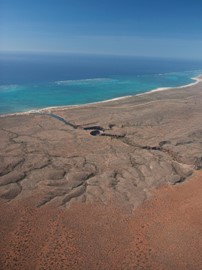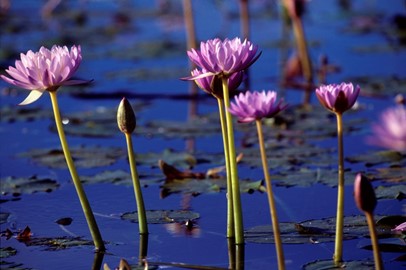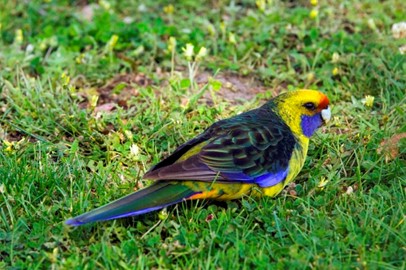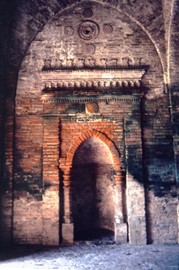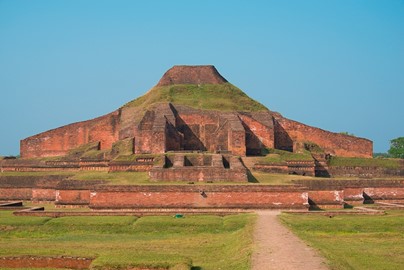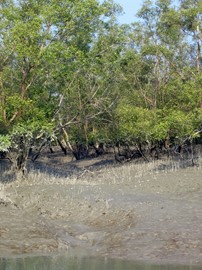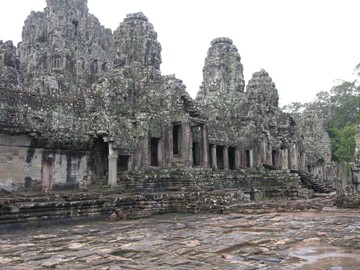region :: asia and the pacific
Bamiyan Valley
Bamiyan Valley, a UNESCO World Heritage site in Afghanistan, recognized in 2003 and listed as World Heritage in Danger, is an ancient cultural landscape famed for its colossal Buddha statues, carved into cliffs between the 4th and 6th centuries CE, though destroyed in 2001. Nestled in a high valley, its caves, monasteries, and Silk Road relics reflect a blend of Greco-Buddhist art and medieval Islamic heritage. This site showcases Afghanistan’s rich historical tapestry, preserving a poignant legacy amid ong... Read More
Minaret of Jam
The Minaret of Jam, a UNESCO World Heritage site in Afghanistan, recognized in 2002 and listed as World Heritage in Danger, is a 12th-century brick tower standing 65 meters tall, built by the Ghurid Dynasty in a remote river valley. Adorned with intricate stucco and tile work, it reflects Islamic architectural brilliance and marks a once-thriving medieval city now lost to time. This isolated monument showcases Afghanistan’s cultural heritage, enduring despite erosion and conflict threats.
Great Barrier Reef
The Great Barrier Reef, a UNESCO World Heritage site in Australia, recognized in 1981, is the world’s largest coral reef system, stretching over 2,300 kilometers with more than 2,900 reefs and 900 islands. Home to vibrant marine life, including over 1,500 fish species and threatened species like dugongs, it reflects an unparalleled natural ecosystem. This site showcases Australia’s biodiversity heritage, offering a global marvel of ecological richness under increasing environmental pressure.
Willandra Lakes
The Willandra Lakes Region, a UNESCO World Heritage site in Australia, recognized in 1981, is an ancient lake system that dried up 18,500 years ago, preserving a remarkable record of human life from over 50,000 years ago. Featuring fossil dunes, archaeological finds like the world’s oldest ritual cremation, and extinct marsupial remains, it reflects early Aboriginal occupation and Pleistocene environmental changes. This semi-arid landscape showcases Australia’s cultural and natural heritage, offering a uniq... Read More
Lord Howe Island
Lord Howe Island, a UNESCO World Heritage site in Australia, is a pristine volcanic island renowned for its unique biodiversity and stunning natural beauty. Located in the Tasman Sea, it boasts lush forests, rugged cliffs, and crystal-clear waters teeming with marine life. Home to rare species like the flightless Lord Howe woodhen and vibrant coral reefs, the island offers a sanctuary for nature enthusiasts. Its dramatic landscapes, including the towering Mount Gower, combined with a tranquil atmosphere, ma... Read More
Gondwana Rainforests
The Gondwana Rainforests, a UNESCO World Heritage site in Australia, encompass ancient subtropical rainforests celebrated for their exceptional biodiversity and evolutionary significance. Spanning rugged landscapes, these forests harbor remnants of Gondwana, the supercontinent from millions of years ago, with unique flora like Antarctic beech and rare fauna such as the Albert’s lyrebird. Towering trees, cascading waterfalls, and volcanic terrain create a dramatic backdrop, offering a living window into Eart... Read More
Uluru
Uluru, a UNESCO World Heritage site in Australia, is an iconic sandstone monolith revered for its cultural and natural significance. Rising dramatically from the arid landscape, its striking red hue shifts with the light, captivating visitors. Sacred to the Anangu people, it holds deep spiritual importance, adorned with ancient rock art and stories of creation. Surrounded by desert flora and fauna, Uluru’s geological uniqueness and timeless beauty make it a global symbol of Australia’s Indigenous heritage a... Read More
Wet Tropics of Queensland
The Wet Tropics of Queensland, a UNESCO World Heritage site in Australia, is a lush tropical rainforest renowned for its extraordinary biodiversity and ancient origins. Teeming with unique species like the cassowary and vibrant tree frogs, it preserves some of the oldest rainforests on Earth, dating back over 100 million years. Dense canopies, cascading waterfalls, and rugged gorges create a stunning landscape, while its ecological diversity offers a living record of evolutionary processes. This pristine wi... Read More
Heard and McDonald Islands
Heard and McDonald Islands, a UNESCO World Heritage site in Australia, are remote volcanic islands celebrated for their untouched wilderness and geological significance. Dominated by the active Big Ben volcano, Heard Island features rugged peaks, glaciers, and stark lava fields, while McDonald Island remains a pristine haven for wildlife. Home to vast colonies of penguins, seals, and seabirds, these islands boast ecosystems free from human interference. Their raw, dynamic landscapes offer a rare glimpse int... Read More
Shark Bay
Shark Bay, a UNESCO World Heritage site in Australia, is a pristine coastal region famed for its rich marine biodiversity and unique ecological features. Its shallow, turquoise waters host the world’s largest seagrass beds, sustaining a thriving population of dugongs, dolphins, and sharks. Ancient stromatolites, living fossils formed by cyanobacteria, highlight its evolutionary significance, while hypersaline lagoons and sandy beaches add to its diverse beauty. This untouched ecosystem serves as a critical ... Read More
Macquarie Island
Macquarie Island, a UNESCO World Heritage site in Australia, is a remote sub-Antarctic island prized for its unique geology and abundant wildlife. Formed by the collision of tectonic plates, its rugged terrain features windswept plateaus and steep cliffs. The island teems with massive colonies of penguins, seals, and seabirds, thriving in its pristine, predator-free environment. Its untouched ecosystems and dramatic landscapes offer a rare glimpse into sub-Antarctic biodiversity, making it a vital site for ... Read More
Fraser Island
Fraser Island, a UNESCO World Heritage site in Australia, is the world’s largest sand island, renowned for its diverse ecosystems and natural beauty. Its golden beaches, towering dunes, and crystal-clear freshwater lakes contrast with lush rainforests teeming with rare species like the Fraser Island dingo. Shaped by shifting sands and ancient geological processes, it offers a striking landscape of ecological significance. This pristine wilderness stands as a unique testament to nature’s adaptability and a c... Read More
Australian Fossil Mammal Sites
Riversleigh and Naracoorte, the Australian Fossil Mammal Sites, a UNESCO World Heritage site in Australia, safeguard a remarkable collection of ancient fossils showcasing the continent’s prehistoric biodiversity. These sites feature well-preserved remains of extinct megafauna, such as the giant wombat-like diprotodon and the marsupial lion, spanning millions of years. Encased in dramatic limestone formations and desert terrains, they provide critical insights into Australia’s evolutionary past. This invalua... Read More
Greater Blue Mountains Area
The Greater Blue Mountains, a UNESCO World Heritage site in Australia, is a rugged wilderness renowned for its dramatic sandstone cliffs, deep valleys, and rich biodiversity. Its ancient eucalypt forests, emitting a blue haze from oil vapors, harbor unique species like the Wollemi pine, a living fossil. Sculpted by millions of years of erosion, the landscape features cascading waterfalls and expansive plateaus. This ecological haven offers a striking blend of natural beauty and evolutionary significance, se... Read More
Purnululu
Purnululu, a UNESCO World Heritage site in Australia, is a remote geological marvel famed for its striking beehive-shaped sandstone domes. Sculpted over millions of years by erosion, these orange-and-black striped formations rise from the arid landscape, creating a surreal vista. The site harbors unique desert ecosystems, supporting rare flora and fauna adapted to its harsh conditions. Sacred to Indigenous peoples, Purnululu blends cultural significance with natural wonder, standing as a testament to Earth’... Read More
Sydney Opera House
The Sydney Opera House, a UNESCO World Heritage site in Australia, is an architectural masterpiece celebrated for its distinctive sail-like design and cultural prominence. Perched on a waterfront, its white-tiled roof gleams against the skyline, symbolizing innovation in modern engineering. Designed by Jørn Utzon and completed in 1973, it serves as a global hub for performing arts, hosting world-class events. This iconic structure embodies artistic excellence and human creativity, making it a timeless emble... Read More
Australian Convict Sites
The Australian Convict Sites, a UNESCO World Heritage site in Australia, encompass historic locations that reveal the nation’s colonial past and the global story of forced migration. These sites, including prisons, barracks, and workyards, were built and inhabited by convicts transported from Britain between 1788 and 1868. Featuring Georgian architecture and stark landscapes, they illustrate the harsh realities of penal life and early settlement. This collection stands as a powerful testament to human endur... Read More
Royal Exhibition Building
The Royal Exhibition Building and Carlton Gardens, a UNESCO World Heritage site in Australia, is a grand architectural complex celebrated for its historical and cultural significance. Completed in 1880, the ornate Victorian-era building, with its soaring dome, hosted major international exhibitions, showcasing industrial progress. Surrounded by meticulously designed gardens featuring fountains and tree-lined paths, it reflects 19th-century urban planning ideals. This iconic site stands as a symbol of human ... Read More
Ningaloo Coast
The Ningaloo Coast, a UNESCO World Heritage site in Australia, is a pristine marine and terrestrial landscape renowned for its vibrant coral reef and biodiversity. Fringed by turquoise waters, it hosts an array of marine life, including whale sharks, manta rays, and colorful fish, thriving along its accessible shorelines. Limestone cliffs and arid hinterlands contrast with the underwater spectacle, showcasing unique ecosystems. This untouched coastal gem offers a rare blend of natural beauty and ecological ... Read More
Kakadu
Kakadu, a UNESCO World Heritage site in Australia, is a vast wilderness celebrated for its rich biodiversity and profound cultural heritage. Its rugged escarpments, sprawling wetlands, and lush forests shelter unique species like saltwater crocodiles and rare birds. Ancient rock art, dating back tens of thousands of years, adorns its cliffs, reflecting the enduring presence of Indigenous custodians. This dynamic landscape blends natural splendor with a living cultural legacy, making it a global treasure of ... Read More
Tasmanian Wilderness
The Tasmanian Wilderness, a UNESCO World Heritage site in Australia, is a pristine expanse of rugged landscapes renowned for its ancient ecosystems and cultural value. Towering peaks, dense rainforests, and wild rivers harbor unique species like the Tasmanian devil and ancient huon pine, some over 3,000 years old. Glacial valleys and archaeological sites, including caves with evidence of Ice Age habitation, highlight its deep history. This untouched wilderness stands as a vital refuge for biodiversity and a... Read More
Bagerhat
Bagerhat, a UNESCO World Heritage site in Bangladesh, is a historic city famed for its remarkable collection of 15th-century mosques and mausoleums. Built by the Muslim ruler Khan Jahan Ali, its architectural gems, like the Sixty Dome Mosque with its intricate brickwork, showcase early Islamic design in the region. Set amidst a tranquil landscape of water tanks and ruins, it reflects a blend of spirituality and urban planning. This ancient site stands as a testament to Bangladesh’s rich cultural and archite... Read More
Buddhist Vihara
Buddhist Vihara, a UNESCO World Heritage site in Bangladesh, is an ancient monastic complex renowned for its historical and archaeological significance. Dating back to the 7th century, this sprawling ruin features a central cruciform temple surrounded by monastic cells, reflecting early Buddhist architecture and community life. Excavations have uncovered intricate terracotta plaques and artifacts, offering insights into the region’s religious past. This well-preserved site stands as a vital link to Banglade... Read More
The Sundarbans
The Sundarbans, a UNESCO World Heritage site in Bangladesh, is a vast mangrove forest celebrated for its unique ecosystem and biodiversity. This labyrinth of waterways and tidal flats shelters the endangered Bengal tiger, along with diverse wildlife like crocodiles and rare birds. Its dense, salt-tolerant mangroves protect the coast from erosion and cyclones, showcasing nature’s resilience. This pristine wilderness stands as a critical sanctuary for conservation and a striking example of ecological harmony.... Read More
Angkor
Angkor, a UNESCO World Heritage site in Cambodia, is a sprawling archaeological marvel of the Khmer Empire, flourishing from the 9th to 15th centuries. Renowned for its grand temples, including the iconic Angkor Wat with its intricate bas-reliefs, it showcases advanced architecture, urban planning, and hydraulic engineering. Recognized for its cultural and historical significance, it stands as a testament to the empire’s artistic brilliance and spiritual devotion.

